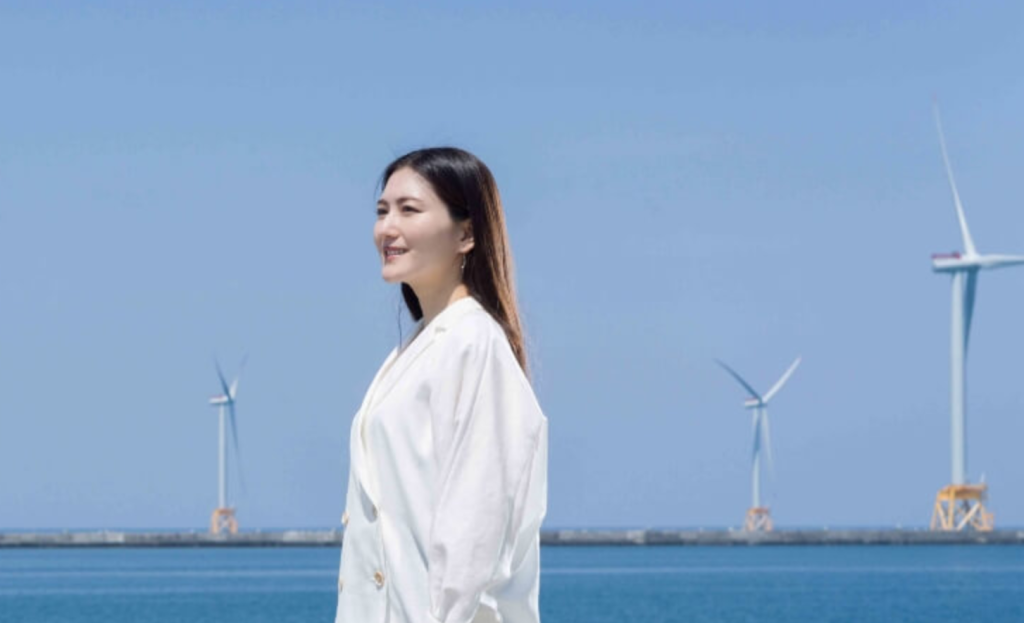Asia continues to dominate global renewable energy growth, accounting for 71% of new capacity added in 2024, while Africa and other developing regions remain far behind despite their potential. Solar and wind lead the charge, comprising 97.5% of additions, with solar alone adding 453 GW. Although global renewables capacity hit a record 582 GW, the world is still off track to meet the COP28 goal of tripling capacity by 2030. Without faster growth and more equitable investment, the energy transition risks deepening the global divide.
The post Asia Powers Ahead in Global Renewable Boom, But Africa Risks Being Left Behind appeared first on Green Prophet.
Japanese singer Ayako Tanaka visits Japan’s Jera wind farm
The latest Renewable Energy Statistics 2025 report from the International Renewable Energy Agency (IRENA) based in the United Arab Emirates reveals a widening global divide in the renewable energy transition. While Asia added the lion’s share of new renewable energy capacity in 2024—an astounding 71%—regions such as Africa, Central America, and the Caribbean collectively contributed only 2.8% to global growth.
Africa, in particular, expanded its renewables capacity by just 7.2%, despite its vast untapped resources and pressing need for energy access.
This imbalance poses a serious challenge to the global goal of tripling renewable capacity by 2030, as agreed at COP28. If the current growth trajectory continues, the world will reach only 10.3 terawatts (TW) of installed renewables by 2030—falling 0.9 TW short of the 11.2 TW target. To stay on course, annual capacity must grow by at least 16.6% over the next five years.
Here is a simple infographic showing the global divide in new renewable energy capacity additions for 2024. Asia dominates with 71%, while Africa and other developing regions together account for just 2.8%, highlighting the urgent need for more equitable investment. Would you like a version with additional data or annotations?
Francesco La Camera, Director-General of IRENA, underscores the urgency of closing this investment and infrastructure gap. “The renewable energy boom is transforming global energy markets, driving economies and creating vast investment opportunities,” La Camera said. “However, the growing regional divide highlights that not everyone is benefiting equally from this transition.”
Indeed, countries that have succeeded in attracting renewable investment—particularly in Asia and parts of Europe—are now reaping broader economic rewards, including increased energy security, job creation, and industrial growth.
The 2024 data also highlights the overwhelming dominance of solar and wind energy, which accounted for 97.5% of all net renewables additions. Solar energy alone contributed 453 GW, reinforcing its position as the most cost-competitive and rapidly scalable clean energy source on the planet. Wind followed with 114 GW.
With renewables now representing 46.2% of global installed power capacity—nearly equal to fossil fuels at 47.3%—the economic and environmental case for continued investment is stronger than ever. Renewable electricity generation grew by 5.6% in 2023 compared to 2022, reaching 8,928 terawatt-hours, while non-renewable generation grew by only 1.2%.
Still, the benefits of this energy revolution are not evenly shared. As La Camera notes, “Bridging the divide and closing the investment gap between countries and regions is critical. It requires targeted policies, international financing, and partnerships that unlock capital and technology where they are needed most.”
UN Climate Change Executive Secretary Simon Stiell echoed this call to action: “To deliver on the global agreement at COP28 to triple renewables by 2030, we need to move much further and faster, and make more progress on the key enablers for vulnerable developing countries. The investments required will pay huge dividends—cutting emissions, driving economic growth, creating jobs, and supporting affordable, secure energy for all.”
The message is clear: the green energy future is well underway, but unless more inclusive policies and financing mechanisms are put in place, the clean energy divide could become the defining inequity of the 21st century.
The post Asia Powers Ahead in Global Renewable Boom, But Africa Risks Being Left Behind appeared first on Green Prophet.




